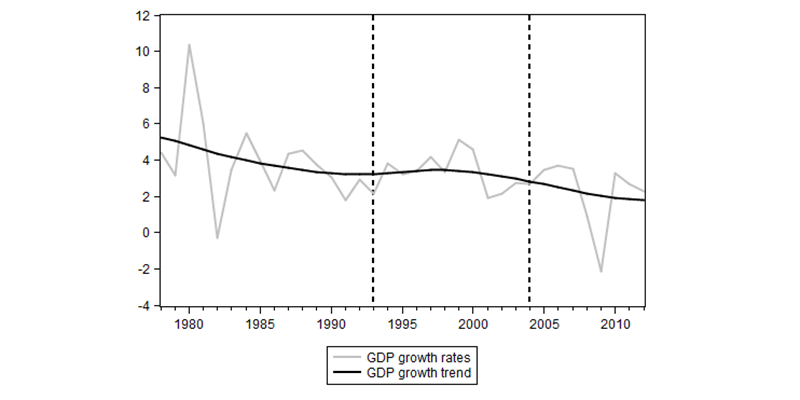Decline in tourism income elastiticies
December 10, 2014
Through an assessment of international data from 1977 to the present, Ulrich Gunter and Egon Smeral of the department of Tourism and Service Management co-authored ‘’The decline of tourism income elasticities in a global context’’ to be published in an upcoming issue of the research journal Tourism Economics.
They looked at the standard tourism demand model for quarterly tourism exports of six different world regions (Northern Europe, Central and Western Europe, Southern Europe and the Mediterranean, the Americas, Asia, as well as South East Asia and Oceania) and their total and applied a panel econometric approach, involving the recurrent measurement of economic data over long periods of time, to map potential differences in income elasticities due to the medium-term speed of growth of the world economy.
Income elasticity measures the responsiveness of the demand for a good to a change in the income of the people demanding the good, in this case the responsiveness of real tourism exports per country / world region to changes in a real GDP aggregate of 25 countries that served as a proxy for global GDP.
The reasons for the decline in the income elasticities from the 1977-1992 to the 1994-2003 period were the ongoing saturation process and the slowing down of economic growth resulting in a change in consumer behaviour.
One of their major findings was the significant decline in income elasticities from the 1994–2003 to the 2004–2013 period. This was mainly due to the dramatic deterioration in the economic environment contributing to higher uncertainty about the future, with the result that precautionary saving increased, liquidity constraints limited expenditures on luxuries in favour of necessities and tourists preferred domestic destinations instead of going abroad.
Of their conclusions, Dr. Gunter said: “Contrary to the traded wisdom that tourism income elasticities should always be expected to be above one, we demonstrated that when different medium-term growth periods are considered at the global level – which also had to be done as suggested by statistical tests for structural breaks – this traded wisdom, at least as long as the current low-growth environment will persist, cannot be supported any longer.”
Image:
Development of real global GDP growth rates: The gray line denotes annual growth rates of real global GDP in %. The black line denotes the GDP growth trend as obtained by the Hodrick-Prescott filter (Hodrick and Prescott, 1997; lambda = 100 for annual data). The dashed vertical lines indicate the structural breaks between period 1 (1977-1992), period 2 (1994-2003), and period 3 (2004-2013), respectively. Copyright: IP Publishing Ltd.





